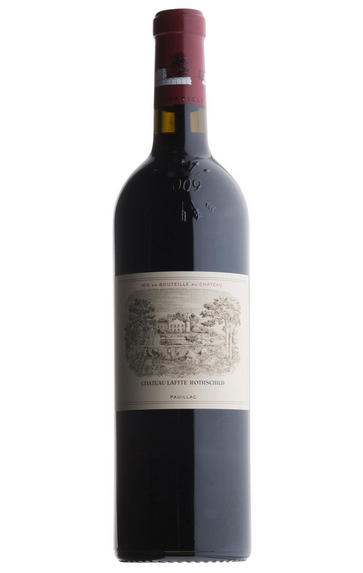
2000 Château Lafite Rothschild, Pauillac, Bordeaux
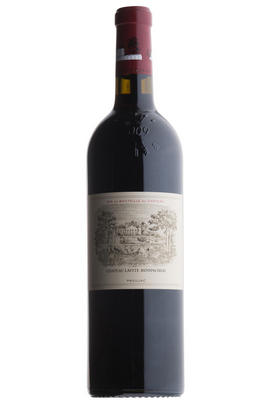
Critics reviews
A baby, still barely evolved at 20 years old, perhaps the slowest out of the block of all Five Firsts at this point in their lives. Savoury black fruits, elegant yet concentrated, extremely Cabernet and extremely Lafite. The power comes slowly, expanding through the palate to show graphite, pencil shavings, and cigar smoke, all with firm acidities and a fantastic grip. 46% of the overall crop went into this wine in the 2000 vintage. A brilliant example of the success at Lafite under the longtime triumvirate of owner Baron Éric de Rothschild, CEO Christophe Salin and estate director Charles Chevallier.
Drink 2022 - 2045
Jane Anson, Decanter.com (July 2020)
The 2000 Lafite-Rothschild is deep in color. It has a beautifully defined bouquet of blackberry, cedar and mint, still quite closed but very focused. There is a lot of power here, but maybe not the same level of elegance as other vintages. The palate is medium-bodied with supple tannins, firm grip, very nicely judged acidity and good density on the finish. This is quite backward and muscular at the moment, although aeration/decanting shaves some of its edges. It’s just beginning to open and improves with time in the glass.
Drink 2023 - 2060
Neal Martin, Vinous.com (September 2021)
The 2000 Lafite-Rothschild is utterly sublime. Delicate, sensual and wonderfully nuanced, the 2000 is majestic. The purity of the fruit is simply striking.
Antonio Galloni, Vinous.com (November 2017)
Well, well, well - Lafite Rothschild does it again. Ever since manager Charles Chevalier was transferred from his beloved Sauternes property of Rieussec (also owned by the Rothschilds) to Lafite in 1994, there has been a succession of profound wines to emerge from this noble estate. The 2000 Lafite Rothschild, a blend of 93.3% Cabernet Sauvignon and 6.7% Merlot (only 36% of the crop made the grade) has an opaque ruby/purple colour, followed by an extraordinary aromatic expression of liquid minerals/stones interwoven with the tell-tale graphite notes, mulberry, black currants, caramel, and tobacco.
In the mouth, it is remarkably light on its feet but somehow seems to pack intense flavours into layer upon layer of fruit and richness that cascade over the palate. A compelling wine, with extraordinary precision, great intensity, and seamlessness despite what are obviously elevated levels of tannin, this wine was provocatively open and beautiful when tasted in January and February, but I am sure it will soon close down. The finish lasted a whopping 72 seconds! This is utterly fascinating stuff.
Drink 2011 - 2050
Robert M. Parker, Jr., Wine Advocate (April 2003)
The nose is fresh, bright, and dense. With aromas of violets, minerals, spices, cool stones, mint, dark fruits, and plum skins, this is beautiful. Very much still a baby right now, it needs much more time. This is a wine for the next generation. Finesse and elegance, truly a wine that makes you contemplate life. This is not about power, there is really nothing like it. 93% Cabernet Sauvignon. Do not even think about touching this for another ten years, 2020. 15+25+25+35. Find the wine!
James Suckling, JamesSuckling.com (February 2011)
The bouquet is amazingly open and forward at this stage, with a ripe black fruit character on the nose just beginning to open up and reveal savoury notes of leather, earth, and roast coffee. The texture is lush and dense, and there is plenty of body and structure to make this a wine for the long term. I visited the Château in July of 2000, and it was pouring with rain; that week, there was plenty of spraying for rot. Fortunately, it was hot and dry for the rest of the summer, and the fruit ended up healthy and ripe, although only 36% of the harvest made it into the grand vin, which was 93% Cabernet Sauvignon and 7% Merlot.
Drink 2022 - 2052
Charles Curtis MW, Decanter.com (March 2022)
Full medium ruby. Flamboyantly perfumed aromas of cassis, graphite and tobacco, lifted by a floral nuance and stony minerality. Very young and precise but not austere or forbidding. A remarkably rich, silky, seamless Lafite with superb vibrancy for the vintage. Tannins are noble and the aristocratic finishing flavours go on and on. I tasted this from a 375 ml. bottle, but from all reports, this wine is equally approachable right now from a standard bottle. Has more sheer density than the beautiful 2001 and may well soon shut down in the bottle.
Stephen Tanzer, Vinous.com (May 2003)
About this WINE
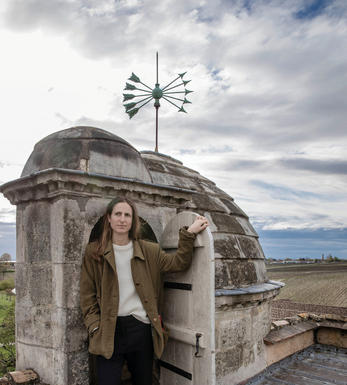
Château Lafite Rothschild
The iconic Château Lafite Rothschild was classified as a first growth in 1855 and has been in the Rothschild family since 1868. Today, Lafite is headed up by Saskia de Rothschild, daughter of long-time steward Baron Eric de Rothschild.
Château Lafite Rothschild is an iconic first-growth property in the Pauillac appellation of Bordeaux, France. It achieved its top-tier rank in 1855 and has been in the Rothschild family since 1868. Today, Lafite is headed up by Saskia de Rothschild, daughter of long-time steward Baron Eric de Rothschild.
The property is located at the northern tip of Pauillac, separated by St Estèphe by marshland and the Jalle de Breuil stream. Two areas of the vineyard are particularly notable: the gravel plateau, which is the heart of the grand vin; and the Plateau de Carruades, from which Lafite’s second wine takes its name. The vineyard is planted mostly to Cabernet Sauvignon (70%), along with Merlot (25%), Cabernet Franc (3%) and Petit Verdot (2%).
A new cellar was completed here in time for the 2011 harvest, with a combination of stainless steel and concrete tanks, of varying sizes. The barrels come from Lafite’s own cooperage, located not far from the property.
In addition to its 110 hectares of vines, the estate has 300 hectares of woods and marshes. The team consider this to be an integral part of the ecosystem.
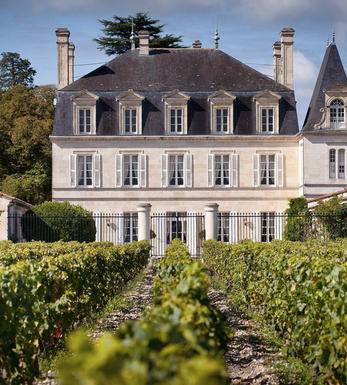
Pauillac
Pauillac is the aristocrat of the Médoc boasting boasting 75 percent of the region’s First Growths and with Grand Cru Classés representing 84 percent of Pauillac's production.
For a small town, surrounded by so many familiar and regal names, Pauillac imparts a slightly seedy impression. There are no grand hotels or restaurants – with the honourable exception of the establishments owned by Jean-Michel Cazes – rather a small port and yacht harbour, and a dominant petrochemical plant.
Yet outside the town, , there is arguably the greatest concentration of fabulous vineyards throughout all Bordeaux, including three of the five First Growths. Bordering St Estèphe to the north and St Julien to the south, Pauillac has fine, deep gravel soils with important iron and marl deposits, and a subtle, softly-rolling landscape, cut by a series of small streams running into the Gironde. The vineyards are located on two gravel-rich plateaux, one to the northwest of the town of Pauillac and the other to the south, with the vines reaching a greater depth than anywhere else in the Médoc.
Pauillac's first growths each have their own unique characteristics; Lafite Rothschild, tucked in the northern part of Pauillac on the St Estèphe border, produces Pauillac's most aromatically complex and subtly-flavoured wine. Mouton Rothschild's vineyards lie on a well-drained gravel ridge and - with its high percentage of Cabernet Sauvignon - can produce (in its best years) Pauillac's most decadently rich, fleshy and exotic wine.
Latour, arguably Bordeaux's most consistent First Growth, is located in southern Pauillac next to St Julien. Its soil is gravel-rich with superb drainage, and Latour's vines penetrate as far as five metres into the soil. It produces perhaps the most long-lived wines of the Médoc.
Recommended Châteaux
Ch. Lafite-Rothschild, Ch. Latour, Ch. Mouton-Rothschild, Ch. Pichon-Longueville Baron, Ch. Pichon Longueville Comtesse de Lalande, Ch. Lynch-Bages, Ch. Grand-Puy-Lacoste, Ch, Pontet-Canet, Les Forts de Latour, Ch. Haut-Batailley, Ch. Batailley, Ch. Haut-Bages Libéral.
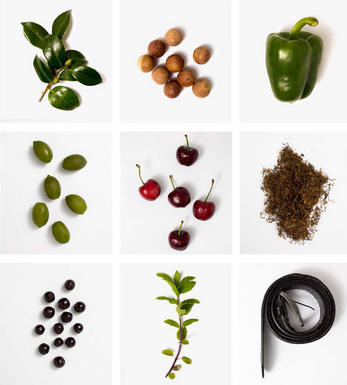
Cabernet Sauvignon Blend
Cabernet Sauvignon lends itself particularly well in blends with Merlot. This is actually the archetypal Bordeaux blend, though in different proportions in the sub-regions and sometimes topped up with Cabernet Franc, Malbec, and Petit Verdot.
In the Médoc and Graves the percentage of Cabernet Sauvignon in the blend can range from 95% (Mouton-Rothschild) to as low as 40%. It is particularly suited to the dry, warm, free- draining, gravel-rich soils and is responsible for the redolent cassis characteristics as well as the depth of colour, tannic structure and pronounced acidity of Médoc wines. However 100% Cabernet Sauvignon wines can be slightly hollow-tasting in the middle palate and Merlot with its generous, fleshy fruit flavours acts as a perfect foil by filling in this cavity.
In St-Emilion and Pomerol, the blends are Merlot dominated as Cabernet Sauvignon can struggle to ripen there - when it is included, it adds structure and body to the wine. Sassicaia is the most famous Bordeaux blend in Italy and has spawned many imitations, whereby the blend is now firmly established in the New World and particularly in California and Australia.


Buying options
Add to wishlist
Description
A baby, still barely evolved at 20 years old, perhaps the slowest out of the block of all Five Firsts at this point in their lives. Savoury black fruits, elegant yet concentrated, extremely Cabernet and extremely Lafite. The power comes slowly, expanding through the palate to show graphite, pencil shavings, and cigar smoke, all with firm acidities and a fantastic grip. 46% of the overall crop went into this wine in the 2000 vintage. A brilliant example of the success at Lafite under the longtime triumvirate of owner Baron Éric de Rothschild, CEO Christophe Salin and estate director Charles Chevallier.
Drink 2022 - 2045
Jane Anson, Decanter.com (July 2020)
wine at a glance
Delivery and quality guarantee